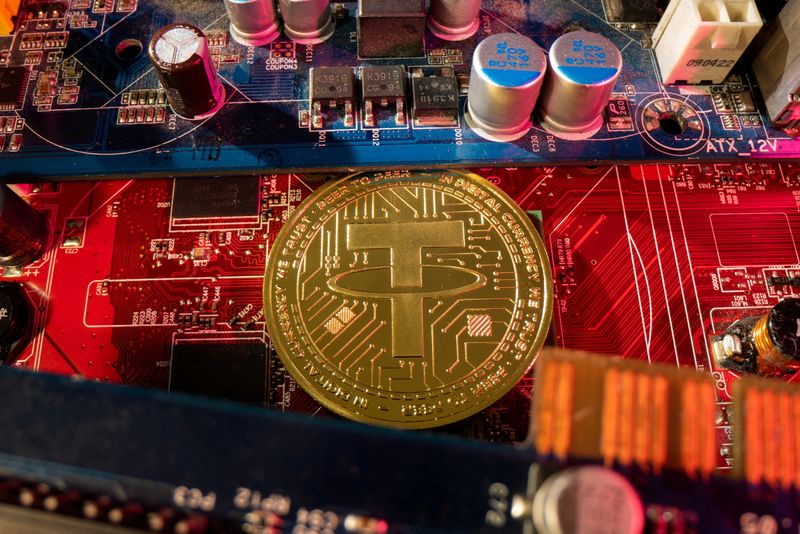60%+ returns in 2025: Here’s how AI-powered stock investing has changed the game
Investing.com -- Stablecoins are not yet a substitute for traditional bank deposits, but that could soon change, according to Morgan Stanley (NYSE:MS) analysts.
Though stablecoins currently lack deposit insurance and don’t pay interest, their utility in fast settlement and global dollar access could make them increasingly attractive—particularly to institutional users.
“Banks should not be complacent,” analysts led by Betsy L. Graseck note, adding that some are already responding by developing tokenized deposits, as JPMorgan has done with JPM Coin and the planned JPMD.
Stablecoins are already reshaping short-term funding markets. Tether, the largest stablecoin, held 66% of its reserves in U.S. Treasury bills as of March 2025, representing roughly 2% of the entire T-bill market.
According to Morgan Stanley, “continued growth could boost demand for short-term Treasuries and give the U.S. Treasury more flexibility in debt issuance.”
Compared to money market funds, stablecoins are constrained by regulation under the Genius Act, which prohibits interest payments and treats holders as unsecured creditors.
In contrast, money funds can offer yield and give investors equity-like ownership. Still, both instruments share similarities in function—providing stable, cash-like vehicles backed by high-quality liquid assets.
“They aim to maintain a stable value—money funds target a $1 net asset value (NAV), while stablecoins aim to maintain a 1:1 peg with fiat currency like the U.S. dollar. During times of market stress, both tend to attract inflows as investors seek safety,” analysts explain.
The market cap of stablecoins, now at $263 billion, is currently driven by retail crypto usage, but further adoption is expected to come from institutions seeking faster transaction speeds and greater collateral mobility.
“Unlike traditional bank deposits, which are locked within a single institution, stablecoins can move freely across blockchain platforms,” Morgan Stanley’s team continued, suggesting broader financial utility.
While some liquidity could move from bank deposits to stablecoins, analysts suggest the shift may be temporary. As the U.S. Treasury deploys funds raised through debt issuance, a portion of that capital often returns to the banking system, potentially offsetting outflows.
The regulatory environment is also evolving. The Genius Act has cleared the Senate, while the Clarity Act is still under House debate.
Morgan Stanley points out that the final shape of these frameworks “will significantly influence how stablecoins interact with the broader financial system.”
With a U.S.-issued CBDC appearing less likely, current legislation favors private-sector solutions, potentially accelerating stablecoin integration into mainstream finance.
